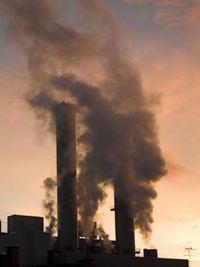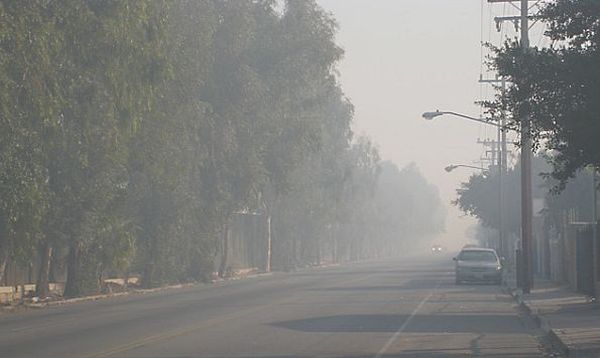Mexico City - Air pollution kills more than 20,000 people each year in Mexico and can trigger asthma attacks, especially in urban areas like Mexico City, one of the world's largest metropolitan areas, the National Institute of Statistics and Geography, or INEGI, said in a report.
The report, titled "National Report on Air Quality in Mexico, 2013," estimated that air pollution caused around 20,500 deaths in Mexico in 2010, with obstructive pulmonary chronic diseases, or OPCDs, ranking as the No. 8 cause of death.
In addition, between 10 percent and 20 percent of deaths from respiratory conditions and cancer are directly associated with air pollution, Justino Regalado, deputy medical director at the National Institute for Respiratory Diseases, said.
 |
Mexicans living in large cities, such as the capital, which, along with its suburbs is home to more than 20 million people, are exposed daily to multiple toxic particles, like ozone, sulfur dioxide, ammonium dioxide and other nitrogen oxides, suspended in the air.
These compounds are derived from fossil fuels burned mostly by motor vehicles and "including some metals and sulfur" from industrial emissions, as well as ground particles, such as aluminum and silicates, National Autonomous University of Mexico, or UNAM, Center for Atmospheric Sciences researcher Gerardo Ruiz told Efe.
In addition to aggravating serious respiratory conditions like OPCDs and causing the development of related tumors, direct exposure to the airborne compounds causes inflammation of tissues in airways and irritation of the eyes, and some particles have "a high cardiovascular impact," Regalado said.
Higher levels of such compounds in the atmosphere is directly associated with the incidence of asthma attacks, pharyngitis and rhinitis, Regalado said.
The figures are worrisome, Regalado said, adding that not all urban areas dealt with the problem with the same effort.
"A serious problem is that monitoring systems outside the metropolitan area in the Valley of Mexico yield results that cannot be trusted much," Regalado said, noting nearby urban centers like Puebla, the capital of Toluca state, and Cuernavaca and Pachuca. Some progress has been made in Mexico City, the urban area most affected by air pollution, thanks to measures taken by officials, such as regulating the use of automobiles, but the "results have stagnated" in recent years, Regalado said.
Source: Fox News Latino


